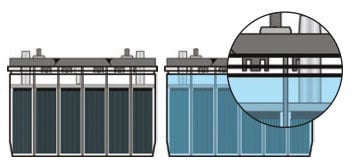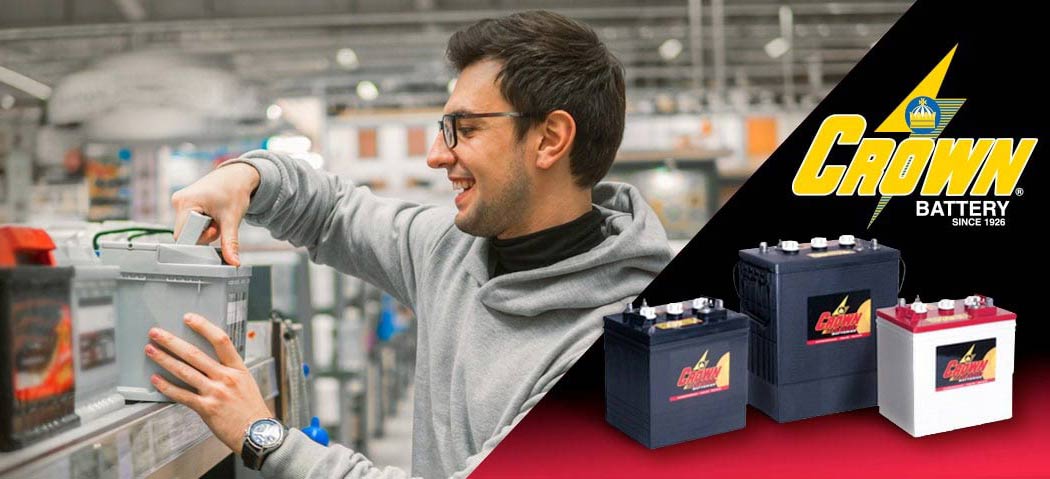Nothing feels better on a hot day than a cool, refreshing drink of water – and almost nothing’s better for your body.
That refreshing drink of water is just as important to your lead- acid battery. Because like us, flooded batteries require periodic watering to stay healthy -- not too much or too little.
To keep your lead battery running at peak levels, follow these watering guidelines:
Does your battery need watering. First, check water levels.
Generally speaking, there are two types of deep-cycle batteries, however only one requires watering.
- Flooded lead-acid batteries: These contain water and require periodic water top-offs.
- AGM batteries: These are sealed and NEVER require watering.
So, if you have AGM batteries, you don’t need to water. However, if you have flooded lead-acid batteries, you will – but watering is fast and easy.
Here's how to water your flooded-lead-acid battery
Start with Safety
To get started, make sure to wear personal protective equipment such as protective eyewear and gloves when working on batteries.
Double-check whether your battery needs regular watering service. Make sure to look for information on the battery labeling that indicate whether the battery can be opened and serviced. Depending upon the battery type you are using, the warning labels on your battery should direct you to “DO NOT OPEN” the battery, or “KEEP VENT CAPS TIGHT FOLLOWING WATERING SERVICE.” Make sure to follow the warning label instructions.
know when to add water
Conventional batteries contain a liquid “electrolyte” mixture of sulfuric acid and distilled water. The plates in a lead battery contain an active material that should be continuously bathed in electrolytes for proper operation, safety, and long life.
A battery should only be watered after it is completely charged. But, you should always check the water level before charging.
Before charging, make sure there is just enough water to cover any exposed plates (rectangular metal parts visible when you look inside a battery). After charging, add enough water to bring the level to the bottom of the vent, about ¾ below the top of the cell.
Important note: that battery owners should never add sulfuric acid to their battery. During normal operation batteries will only consume water – and not sulfuric acid. When your battery’s electrolyte is observed to be low, filling the battery with water will keep the battery healthy and safe for use.
Don’t OverWater
While a battery is charging, the density of the electrolyte solution will increase. If too much water was added before charging, the electrolyte will expand and cause the battery to overflow and damage the battery. Additionally, excessive battery watering can result in additional dilution of the electrolyte, resulting in reduced battery performance.
How often should I water my battery? How often you add water to your battery will depend on how often you use it. A golf cart battery that is only used on the weekends may only require once a month watering. A forklift used all day, every day, may need to have its battery watered every week. Hot weather also increases the need for watering.
It’s important to check your battery’s fluid level regularly – and the best practice is to do so after the battery is finished charging.
Avoid Tap water
Tap water contains minerals that are harmful to batteries, even if added in small amounts. That's why distilled water is your best bet. It’s inexpensive, available everyone, and much cheaper than replacing a failed battery.
Remember, that water will sit on top of the acid solution in your battery until it is mixed by the bubbling produced by charging. If you are taking hydrometer readings of the electrolyte, take readings it’s best to take them after charging is complete.
Don’t let your battery get dehydrated. Keep it watered year-round and it’ll work harder and last longer for you!












